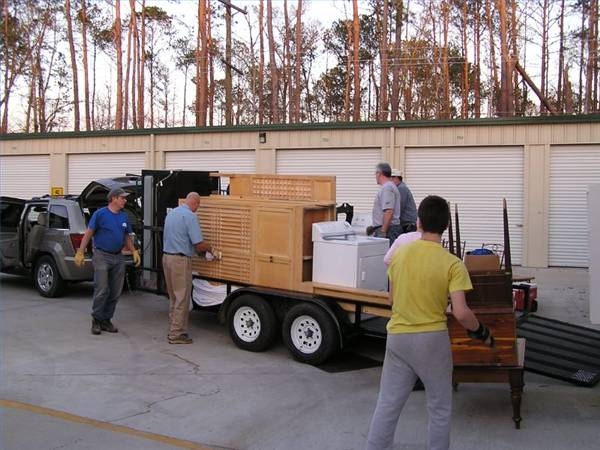
A utility trailer is a great tool to have when you need to move a heavy object or when you have any hauling to do. It seems to be a simple matter to hook the trailer to your car or truck, load it up and hit the road. However, according to the Fatality Analysis Reporting System, more than 20,000 accidents were reported involving utility trailers in the U.S. in 2007. Many of these accidents were the direct result of improperly loading the utility trailers.
Attach the utility trailer to vehicle first, otherwise the first heavy object you load may cause the front of the trailer to raise into the air. Make sure the hitch ball size and the tongue size are the same. When the utility trailer is attached to the vehicle, the tongue should be almost level. Always connect the safety chains, lights and electric brakes and assure they are in working condition.
There should be a plate somewhere on the utility trailer to indicate the maximum weight it is designed to carry. Exceeding this weight may cause swaying, tire failure, suspension failure or a bent frame. The plate will also indicate the maximum tongue weight. Your trailer hitch also has a maximum weight limit. Overloading may cause the hitch to break and also affects handling and braking of the towing vehicle.
Try to place your heaviest items over the utility trailer's axles, then place the remaining load in front of and behind these items. Approximately 60 percent of the weight of your load should be on the tongue. A tail-heavy load will almost assuredly cause the trailer to sway on the road. A hitch-heavy load adversely affects both steering and braking of the towing vehicle. A top-heavy load makes turning more difficult and may even topple when making turns. A top-heavy load also shifts more weight to the tongue during braking, raising the front of the towing vehicle which may cause steering problems. The load should also be balanced side-to-side. An unbalanced load causes the utility trailer to act erratically and can cause tire failures.

Before moving the utility trailer, make sure everything on the trailer is secure. Road wind exerts tremendous force on flat objects. Tie everything down from at least two directions. A single strap may not prevent an object from sliding forward during braking or sliding sideways in turns.
Even when hauling a utility trailer, the driver still needs rear-view and side-view visibility. If the load blocks the view from the towing vehicle's mirrors, be sure to use side-mounted towing mirrors along with smaller wide-angle or blind-spot mirrors. Ensure that all tire pressures meet the manufacturer's recommendations. Unbalanced pressure is hard on the tires and may cause the utility trailer to wander behind the towing vehicle. While driving, try to maintain a constant speed. Any imbalance in the load will show up when you brake, hit a bump, turn or make any abrupt movements.